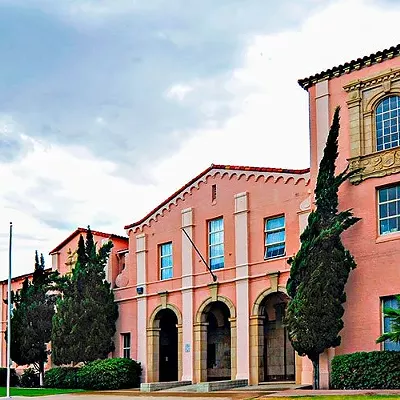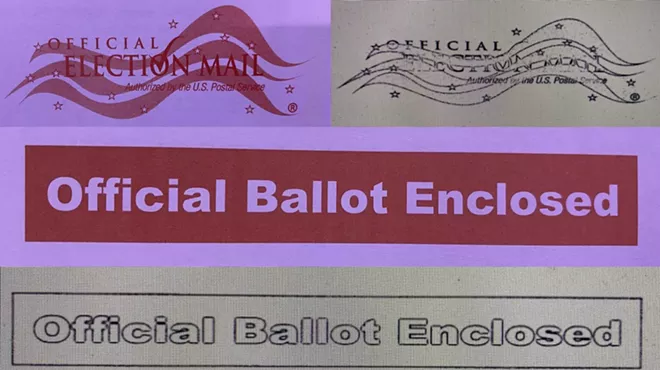Tuesday, October 20, 2015
Funding and Fighting in Arizona Schools
This drives me nuts every time I see it happen. The Arizona legislature is purposefully and knowingly starving schools and school districts. There's not enough money to fund current programs adequately or to add new programs. So, whenever a district decides to put money in one place, it's like it's stealing food from one child and putting it in another child's mouth. Schools fight for morsels of funding from the district. Teachers vie to have their administrators throw them a few crumbs. Parents and other community members complain that other people's children are getting more from the district than theirs. Meanwhile, the Republicans in power sit back and watch the fighting. "This is almost as good as the way we pulled TUSD apart by targeting the Mexican American Studies program!" they say, rubbing their hands together with glee. "Not quite as good as the chaos we created over MAS, but close."
Here's a case in point. According to an article in the Star, the TUSD board will be voting on a proposal to add more grades in some of its schools.
Borman, Collier, Drachman, Fruchthendler and Sabino could have grade levels added to their campuses in a proposal the TUSD Governing Board is set to consider Tuesday.Let's step back and take a look at the plan in isolation for a moment, separate from TUSD's funding problems, separate from the court's mandated desegregation orders. It's addressing a real issue. TUSD is losing students who, if they stayed in the district, would attend those schools. Currently, a significant number of parents are choosing to leave TUSD and send their children to BASIS or schools in the Vail or Catalina Foothills school district. If TUSD can make the programs at those five schools more attractive, it stands a chance of holding onto some of those students, bringing more money to the district and filling some of the schools' empty classrooms.
The grade expansions would result in renovation and transportation costs. TUSD estimates it would amount to about $1.5 million if all the school changes are approved.
If the board votes for the program, will it succeed at increasing district enrollment? I think there's a strong possibility it will. Adding middle school grades at Sabino High and expanding some elementary schools to include more grades is likely to make them more attractive to parents, which means they're more likely to keep their children at TUSD. And the $1.5 million price tag for the expansion really isn't that much in a district the size of TUSD.
To me, looking at the plan in isolation, it sounds like a pretty good idea. Except, nothing exists in isolation at TUSD.
Right now, people advocating for the court's deseg orders are angry that not enough money or attention has been given to some of the district's magnet schools. They complain that the schools have been underfunded over the past few years, and the district has cut new funding plans by a million dollars. They also say that the schools have depended on long term substitutes rather than certified teachers to fill too many positions. And they have reason to complain. The district has dropped the ball when it comes to those schools. So now, when the district wants to lavish funds and attention on five schools, most of which serve the district's Anglo community, that creates another battlefield for the district and the deseg plaintiffs to fight on. True, the district is talking about adding a bus to bring non-Anglo kids to the schools it wants to expand, but that sounds like an attempt to put a deseg ribbon on what is basically an Anglo-centered package. Bottom line, the proposal means $1.5 million would go mainly to schools with a majority of Anglo students, not to schools with a majority of Hispanic students.
In a better funded world, this wouldn't feel so much like an either/or, where you either put scarce funds into improving the educational offerings of the Anglo community or you use the money to take care of the needs of the Hispanic community. It could, and should, be a both/and. That $1.5 million is less than 10 percent of what the state owes TUSD as its portion of the court order for the legislature to restore $330 million a year which it illegally withheld from the schools. If those funds were added to TUSD's budget, the district could afford to add money to programs in other schools and still make the changes at the five schools in the proposal.
And remember, if the funds which were taken away illegally were restored, Arizona would still be at or near rock bottom in per student funding. If the legislature and the governor decided to move us closer to the national average, that would add a substantial amount of money which would give TUSD some discretionary funds to target low achieving students with additional help and resources and to develop programs which could help increase the racial and ethnic balance in its schools — and still have funding to add resources and programs in areas where the students are higher achieving and more affluent. And also have funding to lower class sizes, and to increase teachers' shamefully low salaries.
As long as K-12 education is starved for funds, everyone is going to be fighting over the scraps. Putting more money in the system would relieve some of the pressure and the tension that fuels anger and resentment among school employees and the communities they serve. The problems wouldn't go away, of course, but they would be more manageable, and the fights wouldn't always come down to trying to spread too little money over too many vital educational needs.
Tags: TUSD , TUSD Governing Board , Education funding














